Is it possible to lay linoleum on old linoleum?
To lay linoleum, you need to achieve a flat base surface. So the idea of laying linoleum on top of linoleum (without removing the old sheets) seems attractive. Professionals in the field of finishing work say that this is an acceptable technology, but it cannot be used in all cases. Let's figure out when it is possible to lay new linoleum on top of the old one, and when it is better to remove the old layer.
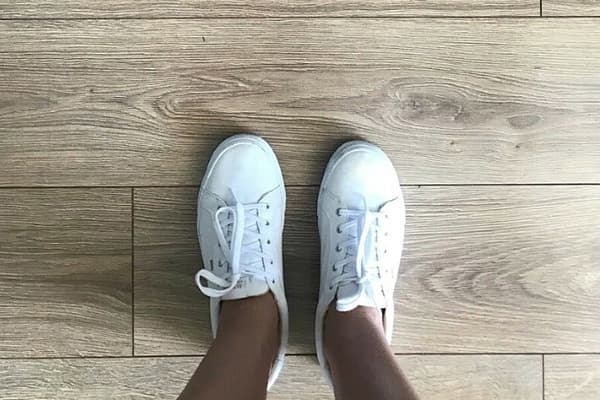
Requirements for the quality of the base for linoleum
Linoleum is the most popular type of flooring in our country. It successfully combines affordable cost, varied design, low maintenance requirements and ease of flooring. But, despite its unpretentiousness, this material makes certain demands on the base on which it will be laid:
- The surface must be smooth. According to the standards, a height difference of no more than 2 mm is allowed on any two-meter vector. This is due to the relative plasticity of linoleum: all the features of the relief will appear on the coating over time. And if there are dents or protrusions in the base, these will become points where the material will break through in the future.
- It is unacceptable for moisture to get under the linoleum. Water will cause the material to ripple and the floor will be hopelessly damaged. Therefore, the base must be thoroughly dried.
- The floor on which linoleum will be laid must have sufficient hardness.A base that is too soft will wash out along with the canvas (under the weight of furniture, pressure from heels, falling objects, etc.), which will ruin the look and lead to the appearance of holes.
Using laminate tiles instead of sheet linoleum does not soften the requirements, but, on the contrary, makes them more stringent. On an uneven base, the locks will constantly come apart, and the coating will quickly lose its aesthetic appearance.
A floor covered with linoleum theoretically satisfies all requirements. It must be carefully leveled and isolated from water even at the time of laying the old canvas. Therefore, the idea of installing a new layer on top of the old one that has not been removed looks very attractive.
Five reasons not to remove old coating
The attractiveness of each renovation solution can be assessed by reviewing the benefits it can provide.
This is what laying a new layer of linoleum on top of the old gives:
- Save time. Dismantling skirting boards, removing old fabric, cleaning (if necessary and repairing) screeds can take from several hours to several days.
- Saving money. Even if you do all the work yourself, during dismantling you will have to spend money on materials to seal cracks in the base.
- Less dirt and debris. Although they say that “breaking is not building,” it is at the dismantling stage that there will be a lot of scraps, debris and dust. All the garbage will have to be taken out, which will again affect the time spent on repairs.
- The old canvas will act as additional noise insulation. In addition, it will not allow heat to leave the room, and the cold base will not allow your feet to get cold.
- Extra softness. The double thickness of the coating will pleasantly spring under your feet and also muffle the sounds of steps.
The economic effect will be especially noticeable if the work of dismantling the old and creating a new floor covering is planned to be entrusted to a hired team. So, removing the old coating will cost about 80 rubles. for 1 m2, priming the surface - another 50 rubles, removing baseboards - about 30 rubles. per linear meter.
All these advantages show: laying new linoleum on an old layer is really beneficial. But experts in the field of finishing work warn against excessive optimism and advise you to first become familiar with the risks that such a decision brings.
Negative consequences of laying new linoleum over old
There are several reasons why professional builders do not recommend laying linoleum on any surface other than a carefully prepared screed. For linoleum, the set of arguments looks like this:
- Any defects that are on the old coating will eventually appear on the new one.
- If the old canvas is not fastened well enough, the new layer of linoleum will quickly go in waves.
- If the sheet is torn by a heel or burned by a fallen match, it is much easier to repair it when there is a solid base underneath the coating. But if there is a second layer under one layer, it will be much more difficult to carry out repairs.
- Between the two layers of coating, ideal conditions are created for the development of mold fungi.
All these arguments are not absolute reasons for rejecting the idea. But before making a decision, you need to carefully weigh all the pros and cons.
Cases when it is better to remove old linoleum
There are several signs that indicate the need to dismantle the old coating to the level of the screed:
- Creases, waves, holes in the canvas are clear arguments in favor of dismantling. If the defects are few in number (one or two problem areas per room) and small in size, then we can hope that the floor can be leveled. But if there is a lot of damage or not located in noticeable places, it is better to remove the old canvas entirely.
- Scuffs, worn areas. This is especially true for walk-through rooms. If the coating has heavily worn areas, it means that it is not uniform in thickness. New linoleum will also wear out very quickly in such places.
- The service life of the old coating is more than 12–15 years. Old varieties of linoleum were made on a fabric basis. Over the decade of operation, colonies of bacteria and mold fungi have probably developed in it. Leaving such a substrate under the floor is dangerous for the health of the residents of the house.
If you plan to lay sports-grade material, then you need to remove the old linoleum, even if it is in perfect condition. The requirements for the quality of laying sports linoleum are as stringent as possible, since uneven floors can lead to injuries during exercise.
If the old linoleum is in good condition, it is firmly glued to the base and has no significant defects, it is permissible to lay a new layer without dismantling. However, this technology is somewhat different from the usual rules for linoleum flooring. Let's look at it in more detail.
The decision has been made: where to start?
First of all, it is necessary to remove all the furniture from the room where the work will be carried out. Only by completely clearing the floor will it be possible to inspect the old coating, eliminate all defects and perform the installation efficiently. In addition, the new linoleum must “rest” before taking on loads.This process takes at least 1 day (more is better).
The next step is to thoroughly clean the surface from dirt. The fact is that organic components of contaminants, once caught between the layers of linoleum, will become sources of rotting. This will lead to damage to the coating and the appearance of unpleasant odors in the room.
Then it is necessary to carefully eliminate all defects of the old canvas. Small bubbles are pierced, filled with glue (using a syringe) and glued to the base. The holes are sealed with patches. All cracks and seams are carefully smoothed with silicone sealant.
The final stage of preparation will be the removal of old skirting boards. If the old covering consists of several pieces, the strips that cover the seams are also removed. These seams are also sealed with sealant.
Purchase of materials and tools
Before going to the store, carefully measure the area of the room. It’s better if you can buy linoleum “in one piece.” Most stores offer cutting services, allowing you to purchase a sheet that will perfectly fit your room.
For flooring on old flooring, it is worth purchasing a fairly thick material with a backing. Homogeneous (single-layer) commercial grade linoleum is ideal. But its cost is already quite noticeable, so here you need to go from the budget. However, the decision to buy linoleum without a backing is not justified: on a soft base it will quickly become unusable.
When buying homogeneous linoleum, bend its corner to check the quality of the material. If a white stripe appears at the bend, the technology was violated during the manufacture of this roll. You should only buy linoleum that does not show stripes when folded.
In addition to linoleum, you will need glue, a spatula and rollers for applying it, a long metal ruler and a construction knife for cutting. New skirting boards must also be immediately included in the estimate.
Laying technology
The process of laying a fresh layer of linoleum consists of several stages.
- Step 1.
To begin with, the new linoleum is spread on the dirt-free, degreased and thoroughly dried surface of the old coating for “acclimatization.” This process will allow the material to straighten and take its final dimensions. The room should not be colder than +16°C or hotter than +24°C. Ideal humidity is about 65%. “Acclimatization” lasts about 48 hours.
- Step 2.
The resting linoleum is leveled along one of the edges of the room. Ideally, you can use two walls forming a right angle for alignment. If there is no such angle, choose a long wall and try to position the canvas so that as little as possible has to be cut off. The excess is cut off with a sharp knife, making back-and-forth movements.
It is acceptable to leave small gaps between the linoleum and the walls. These cracks will be hidden by the baseboard in the future. But it is not recommended to bend linoleum onto the wall: the straightening bend creates bulges and waves along the walls. It will not be possible to correct this defect without re-dismantling the baseboard.
- Step 3.
After trimming, the linoleum is left for another 12–24 hours for final straightening. Then they begin gluing the sheet. This is a rather labor-intensive operation, so in rooms with a small area it is often abandoned, hoping that the linoleum will be held in place of the baseboard. However, when laying over an old coating, it is better to secure the sheet in place with glue or at least double-sided tape.
The roll is carefully rolled up to half, making sure that the material does not move. Then glue is applied to the base and the sheet is pressed firmly, rolling with rollers. After waiting the required time, roll up the linoleum on the second half of the room and repeat the procedure.
- Step 4.
The final stage is sealing the seams and installing new skirting boards in place.
The aesthetics and durability of the new coating depend on the thoroughness of these operations. Once the baseboard and seam caps are installed, you just need to give the new floor a day or two to straighten. If you strictly follow the technology requirements, linoleum will serve for many years.
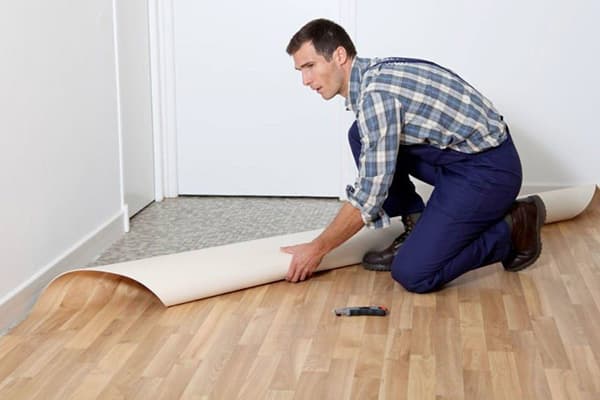
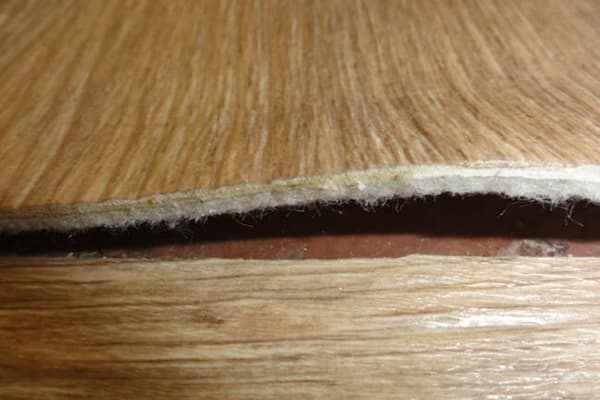
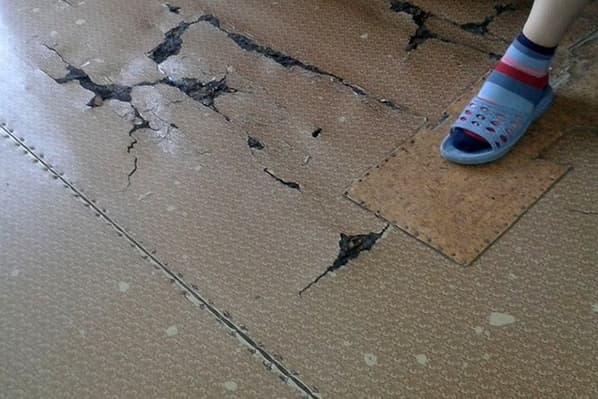
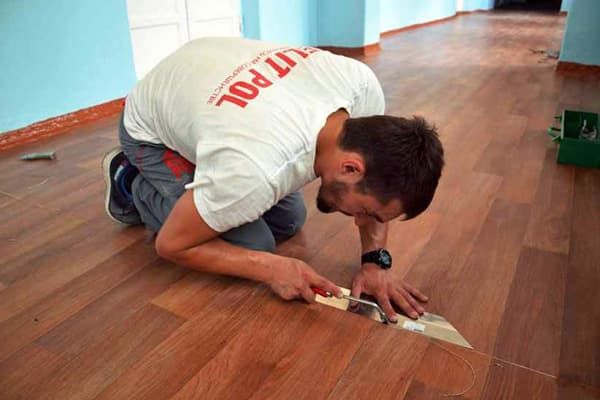

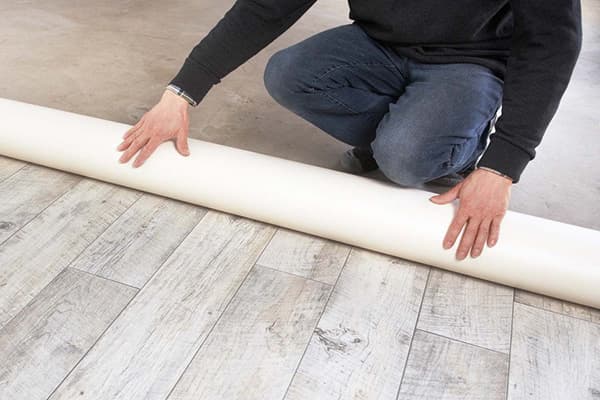
I do the repairs myself. and the question arose of replacing linoleum. The article helped me decide whether to lay new linoleum over the old one.